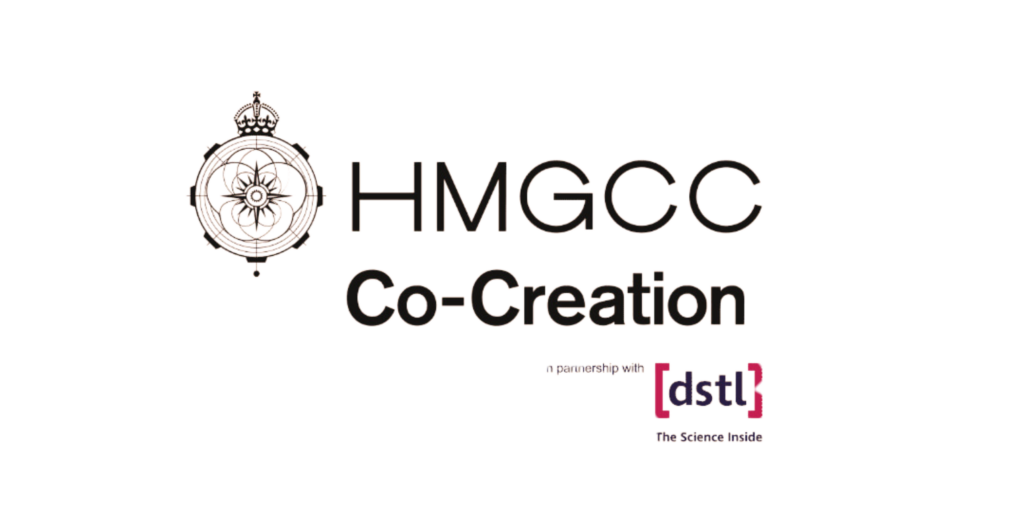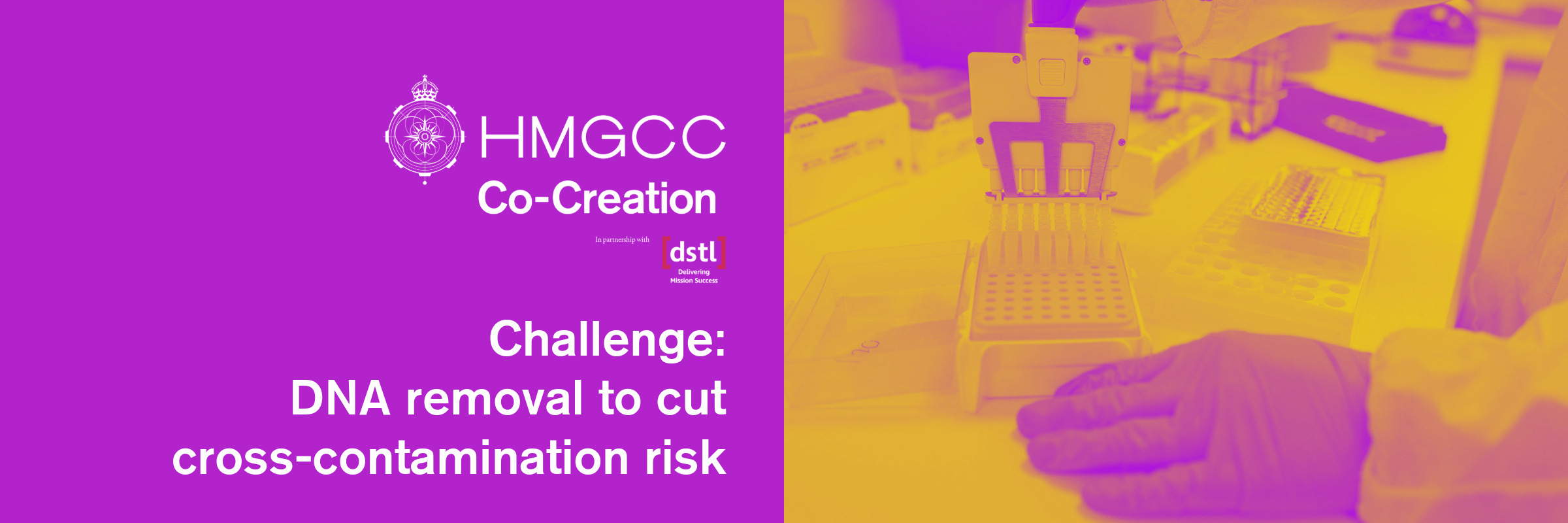
Techniques to decontaminate forensics lab tools of biological traces were being sought in this challenge by HMGCC Co-Creation.
The team were looking for effective solutions for cleaning DNA from tools, surfaces and instruments, used in forensic facilities and in the field, to reduce the risk of cross-contamination of DNA between items.
In this challenge we wanted to explore the use of new or existing techniques and technologies to safely and effectively clean DNA. We welcomed applicants not only from science disciplines, but from other parts of industry or academia, where abilities to clean items might exist.
Organisations were being asked to apply if, over a 12-week period, they can develop and demonstrate technology to meet this challenge. HMGCC Co-Creation provided funding for time, materials, overheads and other indirect expenses.
The challenge
Context of the challenge
Tools and equipment used in forensic labs and in the field often require thorough cleaning to remove traces of biological material, including DNA, to prevent cross-contamination.
The ever-increasing sensitivity of DNA profiling techniques poses increased risk of cross-contamination between tools and objects. Cleaning techniques used to decontaminate items need to keep up with this pace of change by being even more effective in the removal of DNA.
The gap
The effective cleaning of laboratory environments is a key recommendation by the UK Forensic Science Regulator (1).
Cleaning is needed for everything from consumables to tools, electronic equipment, and potentially whole rooms, including porous and non-porous materials. These items need to be cleaned of residual DNA without effecting their functionality.
Traditional cleaning methods, such as hypochlorite bleach or isopropanol alcohol (IPA) can fall short of cleanliness requirements and risk damaging equipment.
Whilst the market is awash with chemicals and guidance, there is still the need for a simple, quick, cost-effective mechanism for the decontamination of tools and equipment
[1] Forensic Science Regulator: DNA contamination controls: laboratory. https://www.gov.uk/government/publications/dna-contamination-controls-laboratory/dna-contamination-controls-laboratory-accessible
Example use case
Nicky is a forensics advisor at a facility set up for disaster victim identification scenarios.
Due to the nature of the work, it is critical that tooling and equipment be clean to avoid the risk of DNA cross-contamination.
Typically, disposable items are used to ensure no cross-contamination, but Nicky has spotted an opportunity to use advanced tools (e.g. 3D printed parts) and new electronic equipment that are not treated as disposable, as long as they can be sufficiently cleaned between uses.
She requires a relatively simple method to clean both inert tools and electronic equipment. It would be useful, although not essential, if the method of cleaning could be portable and relatively quick to use so that it could be used in the field. Crucially, it must be provable that DNA is removed to a certain standard.
Project scope
In this 12-week project, applicants should aim to deliver a demonstration to the sponsors. Those taking part should include specialists who have an in-depth understanding of the mechanisms of cleaning and who would be willing to bring their knowledge to focus on biomaterial and DNA contamination. We welcome applicants not only from science disciplines, but from other parts of industry or academia. We are open to adapting existing technology that is used in other sectors or new ideas for effective and safe cleaning/decontamination techniques.
This is open to Technology Readiness Levels (TRL) from 4 – 9. It is recommended that in proposals label both the existing TRL and TRL that would be expected by the end of 12 weeks. Essential and desirable targets are listed below.
Essential requirements:
- Must be willing to explore a method/methods of cleaning for both non-electrical and electrical devices.
- Must not damage the device being cleaned.
- Must be simple to use.
- Cleanliness post processing must be verifiable. Sampling and DNA profiling will be undertaken by HMGCC.
Desirable:
- Portability.
- Timescale of cleaning i.e. ideally allow for efficient use when out in the field.
- Demonstrate cleaning of non-electronic and electronic devices, detailing the efficacy of the solution.
- Ability to clean porous and non-porous materials.
Constraints:
- Could be used in a variety of spaces, from a temporary forensic facility to a clean room and out in the field.
Not required:
- Horizon scanning only.
- Use of known existing solutions, such as bleach or IPA.
Key dates
Monday 28 July 2025
Competition opens
Tuesday 19 August 2025 at 10:00am
Friday 29 August 2025
Clarifying questions submission deadline
Wednesday 10 September 2025
Clarifying questions published
Thursday 18 September 2025 at 17:00
Competition closes
Tuesday 30 September 2025
Applicants notified
Wednesday 8 October 2025
Pitch day in Milton Keynes
Friday 17 October 2025
Commercial onboarding begins*
*Please note, the successful solution provider will be expected to have availability for a 1-hour onboarding call via MS Teams on the date to be specified to begin the onboarding/contractual process.
Early November 2025
Target project kick-off
Eligibility
This challenge is open to sole innovators, industry, academic and research organisations of all types and sizes. There is no requirement for security clearances.
Solution providers or direct collaboration from countries listed by the UK government under trade sanctions and/or arms embargoes, are not eligible for HMGCC Co-Creation challenges.
